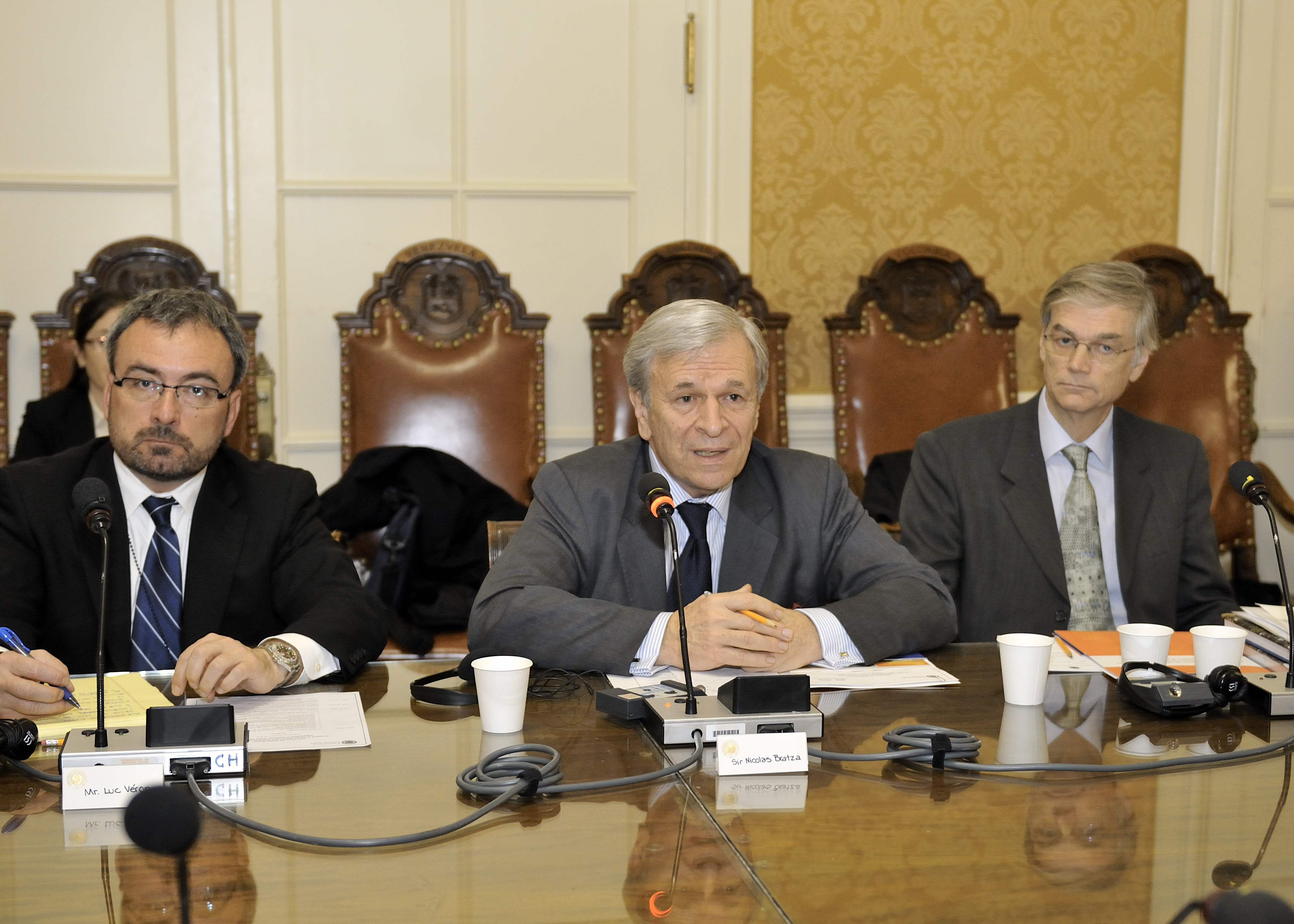Guest post by Ariel Ahram

The protection of women, children, and religious minorities stand prominently among the reasons President Obama offered last week for expanding military action against the Islamic State in Iraq in Syria (ISIS), “They kill children. They enslave, rape, and force women into marriage. They threatened a religious minority with genocide.” American presidents have cited similar humanitarian grounds to justify past military interventions. The need to free Afghan women from the Taliban’s yoke was a common a refrain after the September 11, 2001 attacks. Liberating Shi’is and Kurds who had been victimized by Saddam was an expressed goal of the Iraq invasion in 2003. Obama attributed singular malevolence to ISIS, claiming that “in a region that has known so much bloodshed, these terrorists are unique in their brutality.” A closer look at ISIS’s use of violence reveals that its practices are hardly novel and in fact mimic, to some extent, with broad patterns of state building behavior in the region. Rather than the hallmarks of savagery and barbarity, as senior U.N. officials described the assault on the Yezidis, Shi’is, Christians, and other groups deemed heretical or apostate, the repertoires of sexual and ethnic violence are better seen as part of ISIS’s strategy to enact a particular vision of an Islamic state.
Sexual and ethnic violence, despite often appearing deranged, have an underlying cultural and strategic logic. Drawing on lessons from the Yugoslav civil war and Rwanda in particular, many scholars have pointed out how sexual violence plays a distinctive role in ethno-sectarian conflicts. Serbian forces hatched the Brana Plan in 1990-91 specifically to target Bosnian Muslim women and children, considered the “weak link” of Bosnian society, for sexual violations. Feminist scholars describes these acts as genocidal rape, reasoning that the sexual assaults simultaneously defile the Muslim women, dishonor the Muslim men who were powerless to stop it, augmented Serbia’s own demographic base by impregnating the victim. Yet these explanations capture only part of the story. In Elisabeth Jean Wood’s terms, violence, sexual and otherwise, becomes a practice to which fighters become gradually acclimated to and becomes easier to enact with greater familiarity and alacrity. Examining instances of wartime rape using cross-national statistics and in depth research in Sierra Leone, Timor-Leste, and El Salvador, Dara Kay Cohen argues that rape is not distinctive to ethnic (as opposed to non-ethnic) conflicts and often serves non-military purposes. Rape is especially common for armed groups that rely on abducted recruits and those that depend on contraband to fund their operations, where discipline may already be lacking and fighters have low levels of trust. Participation in gang rape may help to build-up unit cohesion.
In the case of ISIS, it is useful to think beyond the context of conflict alone. Unlike many other civil war belligerents, ISIS adamantly and explicitly announces its intention effort to build a state. Just as ISIS’s calculated moves to control hydro-electric installations and exploitation of oil fields for black market smuggling show its attention to controlling resources, ISIS’s sexual and ethnic violence represent as much an undertaking in state-making as in war-making. The power to control or manipulate sexual and ethnic identity is a key component of all state power. In the Middle East, the regulation of sexual relations is often used as a means to create or reinforce ethno-sectarian boundaries. In the 19th century the Ottoman authorities prohibited marriage between Shi’i men and Sunni women in the provinces of Iraq for fear that Shi’i Iranians were gaining a demographic foothold in the region. Since Islamic law privileges male prerogative over children, the move was meant to block the propagation of Shi’ism within the Ottoman domain. Marriage of Shi’i women to Sunni men was still permitted, since the children of such a union were deemed Sunni. Saddam Hussein took similar measures in the 1970s and 1980s. In late 1970s, in the immediate wake of the Islamic Revolution in Iran, the government moved to deport some 40,000 people deemed to be of “Iranian” (i.e., Shi’i) origins. Thousands of families were interned in prison or prison camps for months, where they were subject to rape and torture, before being transported to the border. Two years later, in the midst of the Iran-Iraq War, the government offered a cash reward to Iraqi men married to women “of Iranian origins” to divorce or have their wives deported. The government set out specific incentives to encourage marriage to war widows and increase fertility. There were similar attempts to combine positive inducements and harsh sexual violence to promote the “Arabization” of the Kurdish population. Rape of prisoners was prevalent during the ethnic cleaning of Kurdistan in the late 1980s. State-inflicted sexual violence is less severe but hardly unknown in the “new” Iraq. Sexualized torture was among the many abuses American guards inflicted on Iraqi prisoners at Abu Ghraib. One of the likely reasons that ISIS chose to clad its American and British beheading victims in orange jumpsuits was specifically to invoke this history. Sexual violence against prisoners continued under former Prime Minister Nouri al-Maliki.
In Syria, sexual violence was similarly endemic well before the rise of ISIS. Reports on Syrian prisons detailed a wide range of sexually abusive practices, including burning genitalia, forcing objects into the rectum, and stripping prisoners naked for public view. In Dara’a, where the first anti-regime protests erupted in 2011, security officials allegedly taunted local families whose sons had been arrested: “Forget your children. If you really want your children, you should make more children. If you don’t know how to make more children, we’ll show you how to do it.” Government forces as well as the state-sponsored Shabiha militia have been implicated a large number of rapes and sexual violations of both men and women during the ongoing civil war.
ISIS’s repertoires of sexual and ethnic violence take three distinct forms. The first is male-on-male sexual violence, including rape. Although this type of sexual violence is actually fairly common in conflicts around the world, data on it are most sketchy, in part because men are not usually thought of as victims and often avoid reporting these incidences. Zainab Hawa Bangura, the Special Representative of the U.N. Secretary-General on Sexual Violence in Conflict, and Nickolay Mladenov, the U.N. Special Representative of the Secretary-General for Iraq, recorded testimony of ISIS’s sexual attacks on both girls and boys. Moreover, Kurdish and Assyrian sources suggest that ISIS systematically sexually assaults new recruits as part of an initiation. Just as for male-on-female rape, this male-on-male sexual violence, perversely called “marriages,” dishonors the would-be recruit and makes it easier to blackmail him if he were to desert or relent while at the same time building fraternal bonds among the perpetrators.
The second form of sexual violence is female sexual enslavement, comparable to the kind of abductions used by Lord’s Resistance Army in Uganda and the Revolutionary United Front in Sierra Leone. In the last few months there have been multiple reports of ISIS abducting women and girls after executing or driving away men. These acts are justified as a type of permissible conduct toward non-believers who refuse to accede to Muslim control and are probably deemed a form of concubinage. After Kurdish forces re-took the dam above Mosul last month, they found several women inside ISIS compounds who had been bound and raped repeatedly. ISIS’s all-female al-Khansaa brigade is reportedly running brothels filled with captive Yezidi women. These semi-public displays of sexuality in which women are essentially passed from man to man are both declarative and degrading. Linking insult to severe injury, ISIS even provided one victim a cellular phone to call her family and inform them about her fate. The bodies of the conquered are in effect expropriated as sexual and breeding stock, comparable to war booty. Many victims were so psychologically scarred that they fear returning to their own families for fear of bringing shame to them. These forms of sexual violence, then, force conquered peoples into the bottom of the Islamic States’ sexual and sectarian hierarchy. Importantly, though, even such ‘illegitimate’ sexual relationships can yield legitimate kinship bonds. While captive mothers may be apostates and infidels, the children of Muslim father are generally deemed to be Muslims themselves. These children must, at least theoretically, be accorded a position with the community and could indeed be demographic fodder for the Islamic State.
Arranged or enforced marriage, the third form of sexual violence, is very different. Even under duress, marriage solidifies horizontal bonds, ties of peerage and alliance between more or less equals. Of course, arranged marriages have a long history in Europe’s dynastic politics and in Islam. The Prophet Mohammad’s polygamous marriages (particularly to widows) helped to cement consanguine ties among the community of early Muslim believers. Similarly, for ISIS, marriage is meant to be an intra-Muslim engagement. ISIS’s direct forbearer, al-Qaeda in Iraq, sought to arrange unions between its fighters and the daughters of the Anbar tribal sheikhs, with some apparent success in 2003 and 2004. More recently, in Syria, ISIS set up a marriage brokerage to recruit partners for its fighters. This is not to say that these relationships are necessarily free of coercion—indeed, far from it. One of the reasons tribal leaders joined the U.S.-backed Sunni Awakening in 2006 was their unwillingness to submit their daughters to men they deemed their inferiors. And, of course, we have little inkling about the wishes of the brides themselves. But the symbolic and political valence of marriage, involving reciprocal exchange and obligation instead of expropriation and seizure, is dramatically different than sexual slavery and concubinage. Given the seeming permanence of ISIS foothold along the now defunct Syria-Iraq frontier, marrying into the ISIS fold might be attractive as a way to ensure personal and familial protection. This also helps explain why ISIS why ISIS enforces such stringent seclusion on married or marriageable women. In Mosul, ISIS imposed complete gender segregation on university studies. Alongside its duties as purveyors of sexual slavery, the female Khansaa brigade also acts as a virtue police ensuring women adhere to Islamic codes of modesty.
ISIS’s violence is a heinous crime of war, but also represents a particular form of statecraft. At first glance, it might appear that these practices, though justified by selective interpretations of Islamic law, serve only to satisfy prurient sexual urges. Much like its manipulation of water and oil resources, though, ISIS’s use of sexual and ethnic violence has both ancient and modern antecedents. By selectively reinforcing, creating, and severing ties of kinship, these violent practices can affect bonds of loyalty and obedience far more substantially than the simple distribution of resource rents. If, as Deborah Avant rightfully urges, the U.S. must develop a political as well as military response to ISIS, then it will have to understand the logic and legacies of sexual and ethnic violence, both by ISIS and by the regimes it challenges.
Ariel I. Ahram (@arielahram) is an assistant professor in Virginia Tech’s School of Public and International Affairs in Alexandria, Va. He is the author of Proxy Warriors: The Rise and Fall of State Sponsored Militias (Stanford, 2011).







2 comments
Interesting. This article reminds me of the politics of body control in communist Romania. During the 80s, Ceausescu banned abortions. Whether you were married or not, an abortion could only be safely provided if you had four children or more. That’s why many women sought illegal abortions, many ending up dead or in hospitals where the doctors would not touch them unless they told who performed the termination. Ceausescu claimed the measure would insure a ‘strong Romania’ with lots of babies to carry out the long-term planned economic projects of the country.